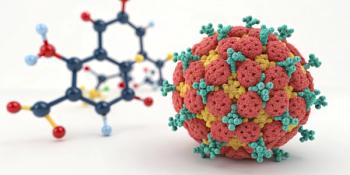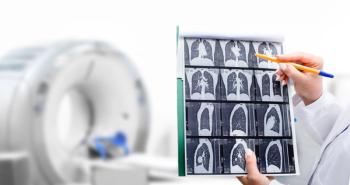
AAP publishes guidelines for managing pediatric C difficile infections
The American Academy of Pediatrics (AAP) has published a policy statement to provide pediatricians with recommendations for assessing and treating Clostridium difficile infections (CDI) in children.
The American Academy of Pediatrics (AAP) has published a
C difficile is the most common cause of antimicrobial-associated diarrhea and is a common healthcare-associated pathogen, the authors say in the article published online in Pediatrics.
Infections in hospitalized children have been rising since 1997, and recently published guidelines only address infection in adults. The AAP guidelines attempt to address gaps in knowledge surrounding CDIs in infants and children.
The authors note that clinical symptoms vary widely, and the diagnosis of infection is based on the presence of “three or more stools that take the shape of their container in a 24-hour period,” and isolation of the organism in the stool specimen.
Although the most commonly used method for assessing C difficile toxins is the enzyme immunoassay (EIA), which detects toxins A and/or B, molecular assays using nucleic acid amplification tests (NAATs) are preferred by laboratories, the authors note. “NAATs combine good sensitivity and specificity, have comparable turnaround times to EIAs, and are not required to be part of a 2- or 3-step algorithm,” the authors say. Neither of these tests should be used to assess post-treatment cure, the authors say.
In diagnosing CDI, the AAP recommends:
Testing for C difficile colonization or toxin should only be performed in children with diarrhea who meet certain clinical and age-related conditions.
Testing in infants (younger than 12 months of age) is complicated by a high rate of asymptomatic colonization; therefore it should be limited to those with Hirschsprung disease or other severe motility disorders or in an outbreak situation. Alternative etiologies should be sought even in those with a positive test result for C difficile.
Testing in the second and third year of life is difficult to interpret; alternative etiologies should be sought. A positive test result indicates possible CDI.
A positive test result after the third year of life indicates probable CDI. Risk factors increasing the probability of infection include antimicrobial therapy, use of proton pump inhibitors, underlying bowel disease, renal insufficiency, or impaired humoral immunity.
Endoscopic or histologic test results positive for pseudomembranous colitis indicate definite CDI.
Test of cure is not recommended. Testing for recurrences less than 4 weeks after initial testing is only useful when the results of repeat testing are negative.
Treatment recommendations include:
Discontinuation of antimicrobial agents is the first step in treating CDI and may suffice in most instances. Antiperistaltic medications should be avoided.
When antimicrobial treatment is indicated for moderate disease, metronidazole (30 mg/kg/day in four divided doses, orally; maximum, 2 g/day) is the drug of choice for initial treatment of first episode of CDI and for first recurrence.
Oral vancomycin (40 mg/kg/day in four divided doses; maximum, 2 g/day), with or without metronidazole, is recommended for severe disease and second recurrence
To control transmission of CDIs, AAP recommends:
Use of gloves with symptomatic patients, washing of hands with soap and water, and environmental decontamination using chlorine products are key control measures. Contact isolation may be removed once the diarrhea has resolved.
Newsletter
Get the latest industry news, event updates, and more from Managed healthcare Executive.


















































